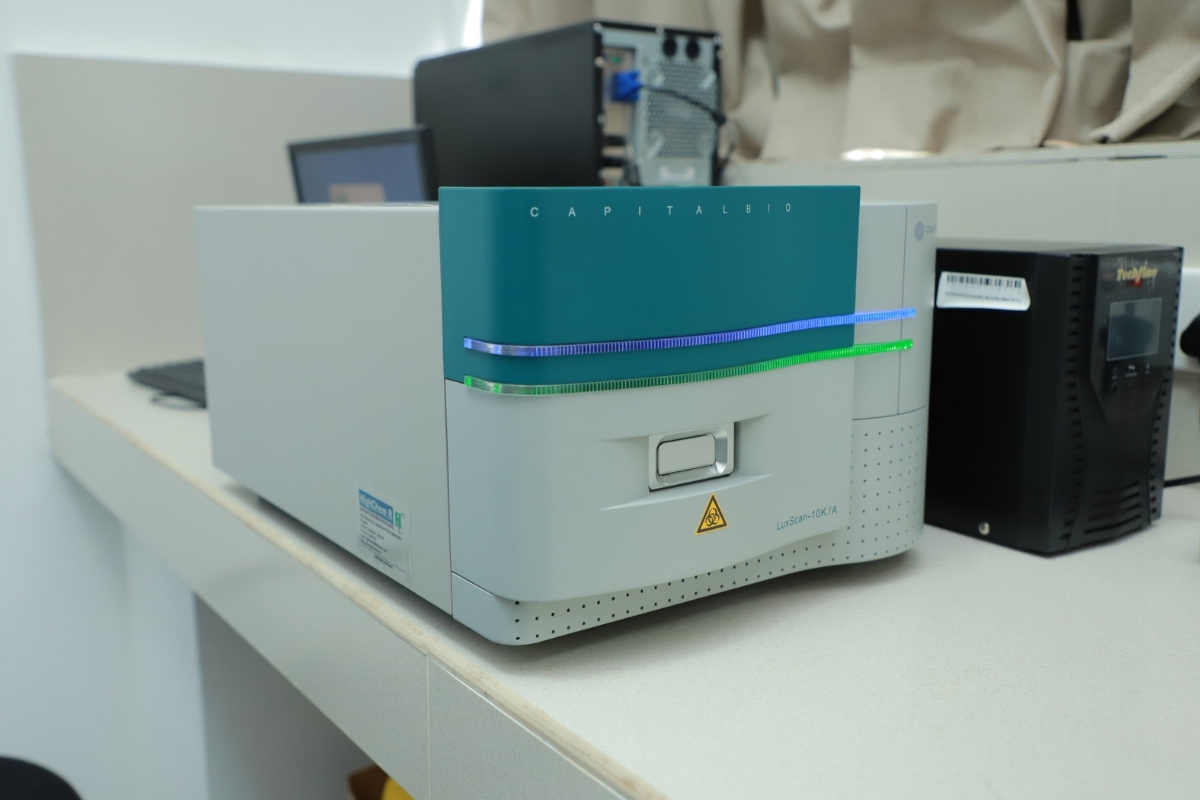
What is a microarray scanner? A microarray scanner is a powerful tool used in molecular biology to analyze gene expression. It works by scanning microarrays, which are small glass slides or silicon chips containing thousands of tiny spots of DNA, RNA, or proteins. These spots represent different genes or genetic sequences. When a sample, such as a patient's tissue, is applied to the microarray, the scanner detects and measures the interactions between the sample and the genetic material on the slide. This technology helps scientists understand gene activity, identify genetic mutations, and study diseases at a molecular level. Microarray scanners are essential in genomics research, personalized medicine, and drug development.
What is a Microarray Scanner?
A microarray scanner is a sophisticated device used in molecular biology to detect and quantify the expression of genes. It reads microarrays, which are small, solid supports onto which DNA molecules are fixed in an orderly manner. These scanners are crucial for various research applications, including genomics, proteomics, and diagnostics.
- Microarray scanners can analyze thousands of genes simultaneously, making them powerful tools for large-scale genetic studies.
- They use laser technology to excite fluorescently labeled samples, allowing for precise detection of gene expression levels.
- The data generated by microarray scanners can be used to identify gene mutations, study gene expression patterns, and discover new biomarkers for diseases.
- Microarray scanners are essential for personalized medicine, as they help identify genetic variations that can influence an individual's response to treatment.
How Does a Microarray Scanner Work?
Understanding the working mechanism of a microarray scanner can help appreciate its significance in scientific research.
- A microarray scanner uses lasers to excite fluorescent dyes attached to DNA or RNA samples on the microarray.
- The emitted fluorescence is captured by a detector, which converts it into digital signals.
- These digital signals are then processed by specialized software to generate a comprehensive gene expression profile.
- The scanner's resolution and sensitivity are critical factors that determine the accuracy of the results.
Applications of Microarray Scanners
Microarray scanners have a wide range of applications in various fields of biological research and medicine.
- They are used in cancer research to identify gene expression changes associated with different types of cancer.
- In pharmacogenomics, microarray scanners help determine how genetic variations affect individual responses to drugs.
- They play a crucial role in studying infectious diseases by identifying pathogen-specific gene expression patterns.
- Microarray scanners are used in agricultural research to study gene expression in plants and develop genetically modified crops.
Advantages of Using Microarray Scanners
Microarray scanners offer several benefits that make them indispensable in modern biological research.
- They provide high-throughput analysis, allowing researchers to study thousands of genes in a single experiment.
- The technology offers high sensitivity and specificity, ensuring accurate detection of gene expression levels.
- Microarray scanners enable the simultaneous analysis of multiple samples, saving time and resources.
- They generate large datasets that can be used for comprehensive bioinformatics analysis.
Challenges and Limitations
Despite their advantages, microarray scanners also have some limitations and challenges.
- The initial cost of purchasing and setting up a microarray scanner can be high.
- Data analysis requires specialized software and expertise, which can be a barrier for some researchers.
- The technology may not detect low-abundance transcripts accurately, leading to potential data loss.
- Cross-hybridization can occur, where non-specific binding of probes leads to false-positive results.
Future Trends in Microarray Scanning Technology
The field of microarray scanning is continuously evolving, with new advancements enhancing its capabilities.
- Advances in laser technology are improving the sensitivity and resolution of microarray scanners.
- Integration with other technologies, such as next-generation sequencing, is expanding the scope of applications.
- Development of more user-friendly software is making data analysis more accessible to researchers.
- Miniaturization of microarray scanners is making them more portable and affordable.
Interesting Facts About Microarray Scanners
Here are some intriguing tidbits about microarray scanners that highlight their importance and versatility.
- The first microarray scanner was developed in the early 1990s, revolutionizing genetic research.
- Microarray scanners can detect gene expression changes in response to environmental factors, such as stress or toxins.
- They are used in forensic science to analyze genetic material from crime scenes.
- Microarray scanners have been instrumental in the Human Genome Project, helping map the entire human genome.
- The technology is also used in veterinary medicine to study genetic diseases in animals.
The Final Word on Microarray Scanners
Microarray scanners have revolutionized genetic research, offering precise, high-throughput analysis of DNA, RNA, and protein samples. These devices enable scientists to study gene expression, detect genetic mutations, and understand complex biological processes. With advancements in technology, microarray scanners have become more efficient, accurate, and user-friendly, making them indispensable tools in genomics, personalized medicine, and biotechnology.
Understanding the capabilities and applications of microarray scanners can help researchers make informed decisions about their experimental designs and data analysis strategies. As technology continues to evolve, we can expect even more innovative features and improved performance from these powerful instruments.
In summary, microarray scanners are essential for modern genetic research, providing valuable insights into the molecular mechanisms underlying health and disease. By staying informed about the latest developments in this field, researchers can continue to push the boundaries of scientific discovery and improve human health.
Was this page helpful?
Our commitment to delivering trustworthy and engaging content is at the heart of what we do. Each fact on our site is contributed by real users like you, bringing a wealth of diverse insights and information. To ensure the highest standards of accuracy and reliability, our dedicated editors meticulously review each submission. This process guarantees that the facts we share are not only fascinating but also credible. Trust in our commitment to quality and authenticity as you explore and learn with us.
